Final Project, SPRING 2006
These beautiful true-color images were taken and processed by the students named above the images.
The text below the images was taken from the students' reports.
Click on the images to see the full size versions.
Jonathan Abate |
Andrea Bredin |
Scot Lunsford |
Zachary Synder |
Kevin Urban |
Yujing Xie |
||||||||||||||
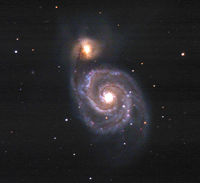 |
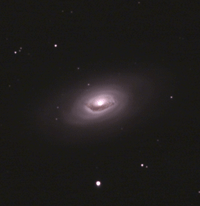 |
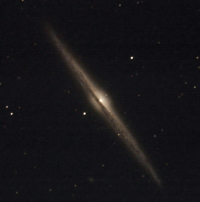 |
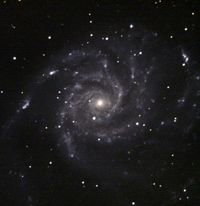 |
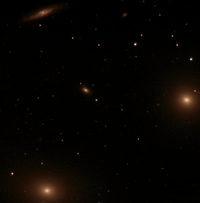 |
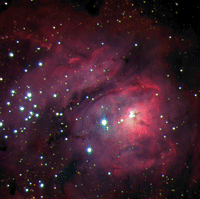 |
||||||||||||||
Messier Object 51 is also known as the whirlpool galaxy. It is located roughly 37 million light years away from Earth. It was discovered in 1773 by Charles Messier. M-51 interacts with a smaller object NGC 5195. The larger M-51 swirls into the smaller NGC 5195. The name whirlpool comes from the resemblance to water flowing down a drain. M-51 is located in the Canes Venatici, and can be found just south of the Big Dipper.
|
Luminance: 63 frames (1260 s) M64, as known in its current state, is believed to have formed by the absorption of a satellite galaxy that collided with it about one billion years ago and has not yet completely settled into the system. This collision caused a very strange property which was dis covered in the 1990s. It was found that the interstellar gas of the outer region rotates in the direcdtion opposite to the direction of the gas and stars.
|
Object Designation: NGC4565 Luminance: 63 frames (1260 s) Introduction to NGC4565 The spiral galaxy NGC4565 was discovered by William Herschel in 1785. It is similar to our own Milky Way galaxy and is a relatively bright deep sky object. Its estimated distance from earth is about 31 million light years according to R. Brent Tully. NGC4565 is also famous due to its “edge-on” orientation to us on earth.
|
Messier 101, the pinwheel galaxy, is a galaxy with a spiral shape located roughly 27 million light years away from Earth. It is found the Ursa Major constellation and the brightest galaxy in the local group. M-101 was also the subject for the Hubble telescope's most detailed galaxy imaging. The pinwheel galaxy is about twice as large as the Milky Way and was first discovered in 1781 by Pierre Méchain. Although M101 was one of the final entries in Messier's catalog, it was the first spiral nebula. Its linear diameter of over 170,000 light years also makes in it one of the largest disk galaxies and it possesses a luminosity of about 30 billion times that of our Sun.
|
The image is of a small section of the Virgo Cluster, containing NGC 4406, NGC 4374, NGC 4387, and NGC 4388. NGC 4406 (also known as M86) is a massive, bright galaxy which is thought to be either an elliptical of type E3 or a lenticular galaxy of type S0_1(3). NGC 4406 resides in the crowded inner core of the Virgo Cluster. With a velocity of 419 km/s, it has the fastest approaching velocity of all documented Messier galaxies (highest blue shift). NGC 4374 (aka M84) was for a long time wrongly thought to be an E1 elliptical galaxy, an assumption helped along by the old, yellowish stars which populate it. Due to new observations, astronomers have found that NGC 4374 may actually be a lenticular galaxy that is "face-on." |
The Lagoon Nebula is located in a very noticeable region of the Sagittarius constellation . At an estimated distance of 5,200 light-years , it is one of the most visible star-forming nebulae . The star cluster NGC 6530 formed from the nebula was discovered first by John Flamsteed in about 1680. The nebula was then discovered by Guillaume Le Gentil in 1747 . |